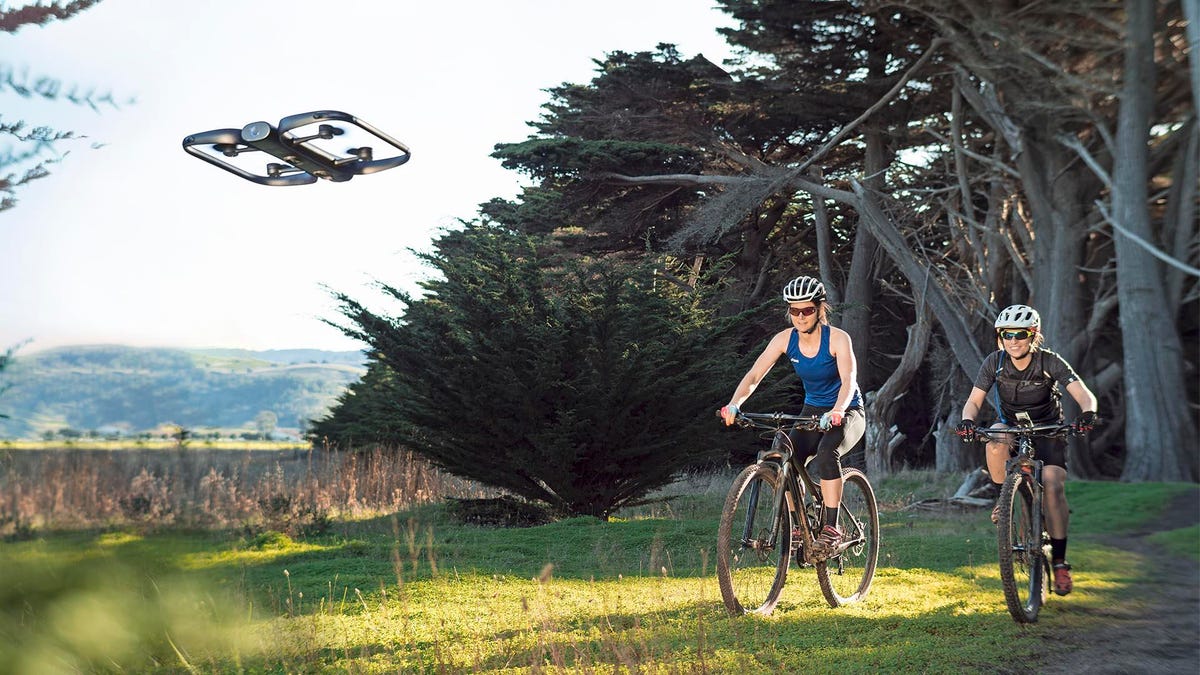Skydio's R1 is a $2,500 selfie drone that flies itself
Using 13 cameras the autonomous flying camera will track your moves and dodge obstacles at high speeds.

Thirteen eyes, the brain of a self-driving car and a 4K-resolution camera to record your every move. And it flies.
No, it's not a creepy surveillance robot (though I'm sure it could be), but actually the first camera drone from robotics company Skydio, the R1.
The "fully autonomous flying camera" uses its 13 cameras to see in all directions and map its environment in real time using an Nvidia Jetson TX1 processor. Skydio says the R1's ability to make intelligent decisions multiple times a second not only allows it to follow you while avoiding collisions on all sides, but also predict what will happen next as it flies. Though its demo video below is no doubt impressive, like drone maker DJI's obstacle avoidance system, the R1's vision sensing could have trouble with bare tree branches and power lines.
Instead of a controller, you use an iOS or Android device and the Skydio app to get the R1 off the ground. There are onscreen sticks to control the quad with the app, but that's not really the point.
Since the drone is smart enough to fly itself, you only need to launch it and select one of its cinematic flight modes. For example, you can set the R1 to orbit you, shoot you from the front, side or back, or track your movements from high above. However, at the moment it can only track people, so following a dog or a car at the moment is out of the question.
Though the R1's autopilot capabilities are unique for a consumer drone, the rest is less extraordinary:
- Captures video at 4K at 30fps or 1080p at 60fps and 30fps
- 2-axis mechanical gimbal for camera stabilization
- 64GB of built-in storage (up to 1.5 hours in 4K; 4.5 hours in full HD)
- 25 mph (40 kph) top speed
- 16-minute flight time (two batteries included)
- 13x16x1.5 inches, 2.2 pounds; 33x41x4 cm, 1 kg
Each drone is made at Skydio's headquarters in California and comes complete with a jaw-dropping early adopter price of $2,499. It's currently available in the US and Canada, but the price converts to about £1,800 and AU$3,180.
From flat-out failures like Lily Robotics and Zano to companies like 3DR and CyPhy that struggled with consumer hardware and eventually pivoted away, drone startups do not have a great track record for success. Add to that DJI's market dominance and Skydio certainly has its work cut out for it. In its favor, though, is that there is no crowdfunding push here, and if you have the money, you'll get an R1 in two to three weeks.

